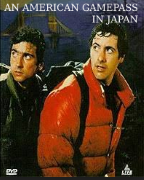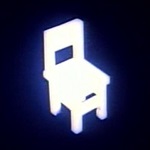|
How depressing/animals dying are the Disney animal movies Chimpanzee/Born to be Wild/African Cats? My daughter digs animals but I'm paranoid about any animal videos because I don't really want a toddler to see animals dying dramatically or gorily.
|
|
|
|

|
| # ? May 17, 2024 10:02 |
|
Is there a thread for bad syfy channel movies? Big rear end Spider just came on and it's shaping up to be... something. Edit: Found it over in TVIV. Mambo No. 5 fucked around with this message at 02:44 on Apr 20, 2014 |
|
|
|
Ariza posted:How depressing/animals dying are the Disney animal movies Chimpanzee/Born to be Wild/African Cats? My daughter digs animals but I'm paranoid about any animal videos because I don't really want a toddler to see animals dying dramatically or gorily. Watch them first? Seems like a safe option.
|
|
|
|
Ariza posted:How depressing/animals dying are the Disney animal movies Chimpanzee/Born to be Wild/African Cats? My daughter digs animals but I'm paranoid about any animal videos because I don't really want a toddler to see animals dying dramatically or gorily. I've never seen any of them, but c'mon, it's Disney. If they even touch on the subject of animal predation, I'm sure it would just show something being chased down, and then a fade to black just before they're caught. Then fade back up to the animal looking contented and voiceover going "And now ol' Simba can relax with his belly full."
|
|
|
|
Bloody Hedgehog posted:I've never seen any of them, but c'mon, it's Disney. If they even touch on the subject of animal predation, I'm sure it would just show something being chased down, and then a fade to black just before they're caught. Then fade back up to the animal looking contented and voiceover going "And now ol' Simba can relax with his belly full." Its not exactly recent but Disney created the myth of lemmings drowning themselves in their 1958 documentary White Wilderness by building a literal turntable to fling imported lemmings off a cliff. I doubt they're still up to that, but seriously, they took 3 years to murder lemmings for documentary footage of a thing they made up.
|
|
|
|
Disney also made Old Yeller. All bets are off.
|
|
|
|
Yes, because god knows a company that is subjected daily to the hissy fits of petulant parents won't have changed their stance on this in the 50 years since that movie/tv show was made.
|
|
|
|
Samuel Clemens posted:Disney also made Old Yeller. All bets are off. Disney licenses Old Yeller as a brand of dog food. Why the slogan isn't "More Bang for Your Buck" I'll never know.
|
|
|
|
Davros1 posted:Disney licenses Old Yeller as a brand of dog food. "Contains real pound hound!"
|
|
|
|
Does anyone know when Mickey Mouse switched from the classic look with the white skin and pac-man eyes to the newer style with peach skin? Was it with Fantasia?
|
|
|
|
According to Wikipedia, the newer design first appeared in the 1939 short Mickey's Surprise Party. So just two years before Fantasia.
|
|
|
|
Samuel Clemens posted:According to Wikipedia, the newer design first appeared in the 1939 short Mickey's Surprise Party. So just two years before Fantasia. Ok thanks. Is it just me or does the shot where he throws his cane over by the door (around 2:23) look like early CG? Weird.
|
|
|
|
Lord Krangdar posted:Ok thanks. Is it just me or does the shot where he throws his cane over by the door (around 2:23) look like early CG? Weird. Looks like it was animated by Walt Kelly and Ollie Johnston. Kelly probably did that particular shot. Here's the workprint of his unfinished Pogo cartoon: https://www.youtube.com/watch?v=1Q_By2Qi5bE&t=163s
|
|
|
|
I think I know the answer to this one because of how it was originally designed to be presented in the theater, but does there exist a (home media) version of How The West Was Won that doesn't have the weird panorama effects on the edges of the screen? I'm sure it was amazing in the theaters it was designed for, but it's too distracting on TV.
Sand Monster fucked around with this message at 22:04 on Apr 23, 2014 |
|
|
|
Sand Monster posted:I think I know the answer to this one because of how it was originally designed to be presented in the theater, but does there exist a (home media) version of How The West Was Won that doesn't have the weird panorama effects on the edges of the screen? I'm sure it was amazing in the theaters it was designed for, but it's too distracting on TV. You want to lose 60% of the picture? The newest bluray restorea it as good as it can be done, take a look at that.
|
|
|
|
Sand Monster posted:I think I know the answer to this one because of how it was originally designed to be presented in the theater, but does there exist a (home media) version of How The West Was Won that doesn't have the weird panorama effects on the edges of the screen? I'm sure it was amazing in the theaters it was designed for, but it's too distracting on TV. Do you mean this effect?  Because the DVD doesn't do that, it's just the Blu Ray.
|
|
|
|
Cinerama was projected onto a deeply curved screen (146 degrees, I think) and was shot with a 3-lens camera. The "Smilebox" effect duplicates and corrects geometry that you'd see in the theater as opposed to a flat screen. When you see it flat, there's some strange distortions - some of which were corrected by Warner's remastering. https://www.youtube.com/watch?v=i8bZI_dMOBU Tech stuff begins at 3:30. The other Cinerama Blu-Rays are Smilebox only and generally look great. This really only works on the 3-lens Cinerama films. If you applied to films only exhibited on the curved screen like 2001 or It's a Mad Mad Mad Mad World, you'd have some serious distortion rather than corrected geometry.
|
|
|
|
They should do 3D releases of smilebox Cinerama movies where the center of the image recedes and the left and right edges come out, mimicking the curved screen even more. That's my idea.
|
|
|
|
delete.
|
|
|
|
I was just watching Star Trek: The Motion Picture and I realized it had a lot of scenes where someone in the close-up range and in the distance were both in focus, separated by a thin line of blurriness. Not sure what it's called. My main question is: was this sort of effect new in 1979, given how many shots it's in? Or was it just one of the Power's That Be's choice? And what is it called?
|
|
|
|
It's an effect achieved by a split-focus diopter, and I'm not sure when it was invented but it was definitely popular in the 70s (see also: tons of Brian de Palma films, the office scenes in All The President's Men, other similarly rad films).
|
|
|
|
MisterBibs posted:I was just watching Star Trek: The Motion Picture and I realized it had a lot of scenes where someone in the close-up range and in the distance were both in focus, separated by a thin line of blurriness. Not sure what it's called. Split diopter, and it definitely wasn't new to '79. I feel like Kurosawa used 'em a lot. edit: actually I could be wrong, on the wiki it says the diopter itself was new to the '70s and the earlier uses of that kind of shot were created in other ways.
|
|
|
|
Uncle Boogeyman posted:Split diopter, and it definitely wasn't new to '79. I feel like Kurosawa used 'em a lot. You could force it with lighting, Citizen Kane does that a lot.
|
|
|
|
penismightier posted:You could force it with lighting, Citizen Kane does that a lot. I feel like Seven Samurai was the movie where I first noticed that kind of shot a lot.
|
|
|
|
The earliest film I've seen to have split-diopter photography is the '61 King of Kings. (The film is full of split diopter shots. Overall fantastic cinematography.) penismightier posted:You could force it with lighting, Citizen Kane does that a lot. A lot of the "deep focus" shots in Citizen Kane were achieved with matte paintings and rear projection. Most were obviously in-camera, though.  Orson Welles is sitting in front of a screen in this shot
|
|
|
|
So... super dumb question, why would I use a split diopter when I could just set up a very very deep DOF?
|
|
|
|
AlternateAccount posted:So... super dumb question, why would I use a split diopter when I could just set up a very very deep DOF? No out of focus area between them. It looks different.
|
|
|
|
It seems to me that most of the time though, the blurry section is hardly meant to be noticed (at least in a lot of the images I looked up). When it is apparent like in that picture from King of Kings I guess the idea would be to portray two characters separated or distanced in some way other than physically. I must not have the eye or knowledge for these things though because that shot from Citizen Kane looks fairly simple and I can't get why it would have to be "achieved" by any special effect.
|
|
|
|
Deep focus is done by clenching the camera aperture up really small and super-restricting the amount of light that strikes the film/sensor, which means that the deeper the focus, the more light is necessary. The sheer amount of LIGHT needed to get a shot like that, particularly in the 40s, would have been extreme. It's the same with split diopters, particularly considering that when split diopters were popular, the name of the game was low-key, naturalistic/cheap lighting. So the advantage of a split diopter was that you could simulate an extremely deep focus shot with the aperture fairly wide open, and thus requiring way less light. Split diopters also do look different and sort of funky, and they were kind of a stylistic fad, probably because of the limiting factor of the big fuzzy line down the middle of the frame.
|
|
|
|
Magic Hate Ball posted:Deep focus is done by clenching the camera aperture up really small and super-restricting the amount of light that strikes the film/sensor, which means that the deeper the focus, the more light is necessary. The sheer amount of LIGHT needed to get a shot like that, particularly in the 40s, would have been extreme. It's the same with split diopters, particularly considering that when split diopters were popular, the name of the game was low-key, naturalistic/cheap lighting. So the advantage of a split diopter was that you could simulate an extremely deep focus shot with the aperture fairly wide open, and thus requiring way less light. Split diopters also do look different and sort of funky, and they were kind of a stylistic fad, probably because of the limiting factor of the big fuzzy line down the middle of the frame. Yeah, and you'd probably need a wide lens for its greater depth of field, which might not be what you wanted.
|
|
|
|
Also, the amount of effects in Citizen Kane is absurd. It's funny, because I've heard people complain about stuff like the effects shots in Wolf of Wall Street as being somehow dishonest. Funfact!! cinema is a lie
|
|
|
|
Even if they if getting enough foot candles wasn't an issue for that King of King's shot, the longer focal length wouldn't have kept both characters in crisp focus. When critical focus is really close even f22 won't get you that much depth. Going wider would have made it possible, but then the background character would have been much smaller and the overall composition wouldn't be as strong. Also, while we have ultra wide lenses with amazing geometric correction now (That's what lets directors like Cauron shoot everything at 17mm), the lenses at the time would have made the foreground character's face look very distorted. Other considerations are that lenses tend to perform best (sharpest) within a certain aperture range, and that tends to be around the middle of the range. It's less of a concern with more recent lenses, but was pretty noticeable on previous lens generations and something cinematographers would try to light around as difference in sharpness (especially shot to shot) are pretty noticeable on a theater screen. Also, controlling the nuances of light gets a difficult when you start using extremely bright sources. That's not as much a problem for the more stagey setups of classic Hollywood, but the more natural looks favored by most current DPs (Especially Deakins or Lubezki) wouldn't be realistically achievable under those conditions. As a side note, these shots are achieved with digital composites fairly often these days. Bugblatter fucked around with this message at 01:09 on Apr 29, 2014 |
|
|
|
I watch Hedwig and the Angry Inch a lot, like whenever I'm feeling down, anyway my question is regarding Hedwigs mother and the GI soldier that was his father, did his father sexually abuse him? What is his mother saying when she kicks him out? It's kind of implied as Hedwig before introducing his father says " Who should i say touched me the most?". I know it's super specific but was just wondering if my interpretation was the correct one? I will be surprised if I get an answer.
|
|
|
|
AlternateAccount posted:So... super dumb question, why would I use a split diopter when I could just set up a very very deep DOF? It's hard to get that with some lenses. King of Kings was shot in Technirama, which used an anamorphic lens (like CinemaScope) combined with a VistaVision camera to achieve a 2.35:1 image. Anamorphic lenses are notoriously hard to use for deep focus. That's why you tend to see more rack focus used in anamorphic films, which results in this wonderful "bump" effect when focus is shifted. The split diopter lens made it easier for films shot with anamorphic lens to capture that sort of composition. Off the top of my head, you can see a lot of examples in Star Trek: The Motion Picture, Blow Out, Reservoir Dogs (Super-35), and The Thing. This is also why VistaVision did fairly well as a shooting format in the 1950s because it wasn't that different from a regular 35mm camera, used 35mm film, and similar optics. Yet you got 2x the frame area. VistaVision continued to be used for special effects since the 2x frame size allowed for images to look more consistent after going through an optical printer when joined with straight 35mm shots.
|
|
|
|
What's the smallest useable aperture on 70mm and IMAX? I keep forgetting that 35mm motion picture film has much less area than 35mm still film. EDIT: Actually some page that explains some of the differences between photography and cinematography would be really interesting. I know my way around still film photography, but nothing about motion picture stuff. For example, can you alter the exposure time independent of the frame rate? david_a fucked around with this message at 04:10 on Apr 29, 2014 |
|
|
|
david_a posted:What's the smallest useable aperture on 70mm and IMAX? I keep forgetting that 35mm motion picture film has much less area than 35mm still film. Do you mean the what is the smallest f-stop? That is dependent on the lens and doesn't really change with format since the number just represents the ratio of the focal length to the diameter of the aperture. So far as the actual physical size of the diameter goes, you can make it as small as you want so long as it still exists, though there's obviously a point where the exposure time and footcandles become impractical. But an IMAX lens is just as capable as a medium format still camera of achieving f22 (The two formats are about the same size). Related, f-stops aren't great measurement for exposure since they don't take into account the light lost between multiple lens elements. That's why it's so difficult to get deep focus with anamorphic lenses, they lose a lot of like between all the elements needed to squeeze the image. So instead we use transmission stops (t-stops) which do take that into account. A t-stop will be higher than an f-stop, in the case of anamorphic lenses it may be much higher. As far as control over exposure time goes, we have some methods but they all mess with the impression of movement. The main thing we can do is adjust the shutter angle. Closing it down shortens the exposure but also reduces motion blur creating a stuttery look like in Saving Private Ryan. Opening it up increasing exposure time but adds extra motion blur which has an odd effect. We can also under or overcrank the camera (running the film through faster or slower), but that results in slow motion or fast motion. Though we'd normally adjust the shutter angle to keep the motion blur appropriate to the new speed of motion as well. There are other more uncommon methods like double up frames too, but the effect on motion is even more severe/stylized. Short answer though, if you want normal looking motion, you're hands are tied for exposure time.
|
|
|
|
An IMAX (horizontal 65mm) frame is 2.74" x 1.91" [1.44:1] - by comparison, regular 65mm (vertical) is 1.91" × 0.87" [2.20:1] and the max area of 35mm is 0.98" x 0.735" [1.33:1].
|
|
|
|
Bugblatter posted:Do you mean the what is the smallest f-stop? That is dependent on the lens and doesn't really change with format since the number just represents the ratio of the focal length to the diameter of the aperture. So far as the actual physical size of the diameter goes, you can make it as small as you want so long as it still exists, though there's obviously a point where the exposure time and footcandles become impractical. But an IMAX lens is just as capable as a medium format still camera of achieving f22 (The two formats are about the same size).  (I'm guessing no) (I'm guessing no)quote:Related, f-stops aren't great measurement for exposure since they don't take into account the light lost between multiple lens elements. That's why it's so difficult to get deep focus with anamorphic lenses, they lose a lot of like between all the elements needed to squeeze the image. So instead we use transmission stops (t-stops) which do take that into account. A t-stop will be higher than an f-stop, in the case of anamorphic lenses it may be much higher. quote:As far as control over exposure time goes, we have some methods but they all mess with the impression of movement. The main thing we can do is adjust the shutter angle. Closing it down shortens the exposure but also reduces motion blur creating a stuttery look like in Saving Private Ryan. Opening it up increasing exposure time but adds extra motion blur which has an odd effect. We can also under or overcrank the camera (running the film through faster or slower), but that results in slow motion or fast motion. Though we'd normally adjust the shutter angle to keep the motion blur appropriate to the new speed of motion as well. There are other more uncommon methods like double up frames too, but the effect on motion is even more severe/stylized.
|
|
|
|
Bugblatter posted:Even if they if getting enough foot candles wasn't an issue for that King of King's shot, the longer focal length wouldn't have kept both characters in crisp focus. When critical focus is really close even f22 won't get you that much depth. Egbert Souse posted:Anamorphic lenses are notoriously hard to use for deep focus. That's why you tend to see more rack focus used in anamorphic films, which results in this wonderful "bump" effect when focus is shifted. Good stuff, all who replied. Thanks for your answers.
|
|
|
|

|
| # ? May 17, 2024 10:02 |
|
On the Star Trek features they talk about it a bit, I honestly don't remember how in depth but they point out problems as well- I remember one being when the light probe from VGer is on the screen, it's a split screen; look at the set and ceiling and you can see in some parts it doesn't line up at all when it moves around. This scene here: https://www.youtube.com/watch?v=aeneVqyoBTo
|
|
|































